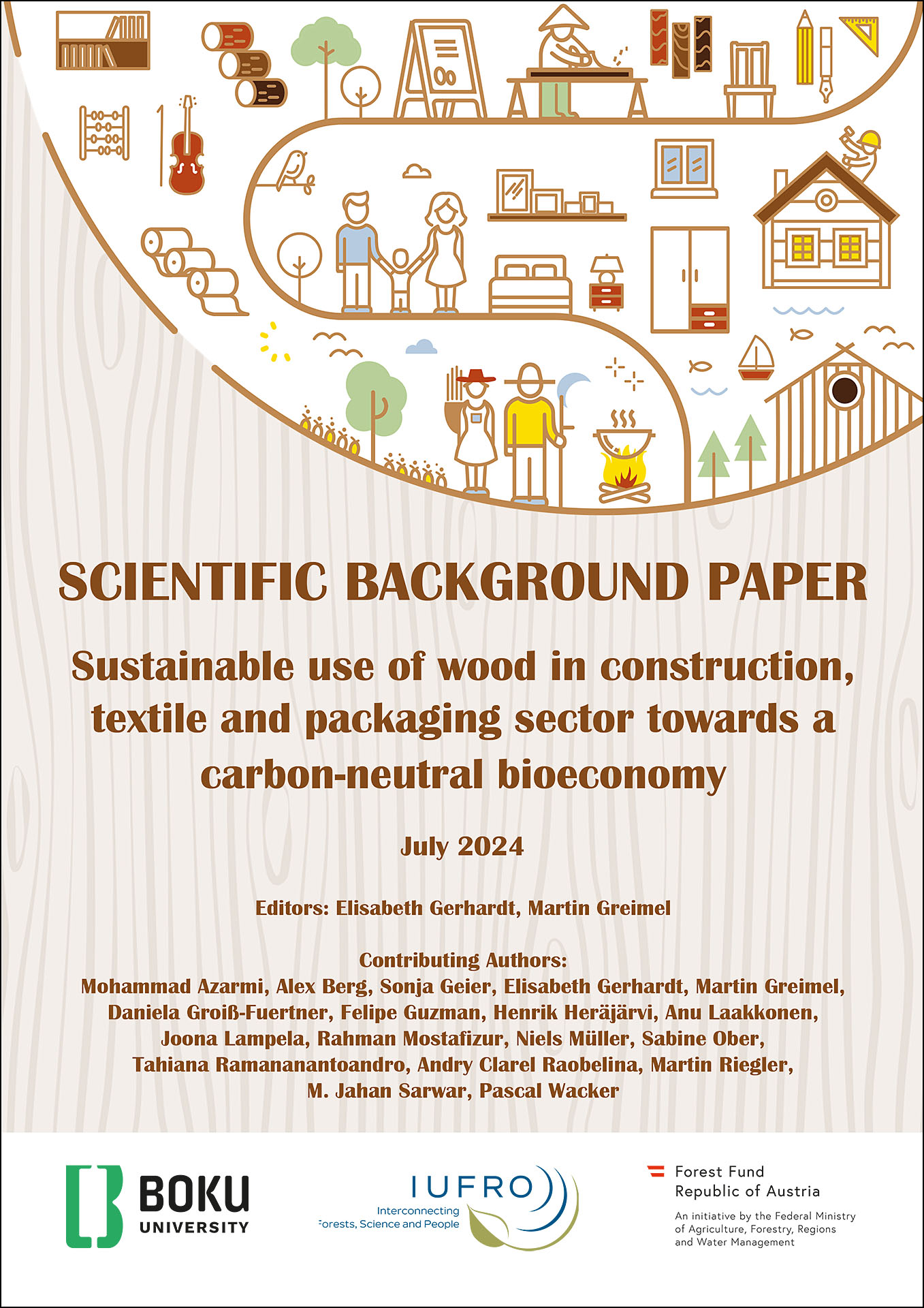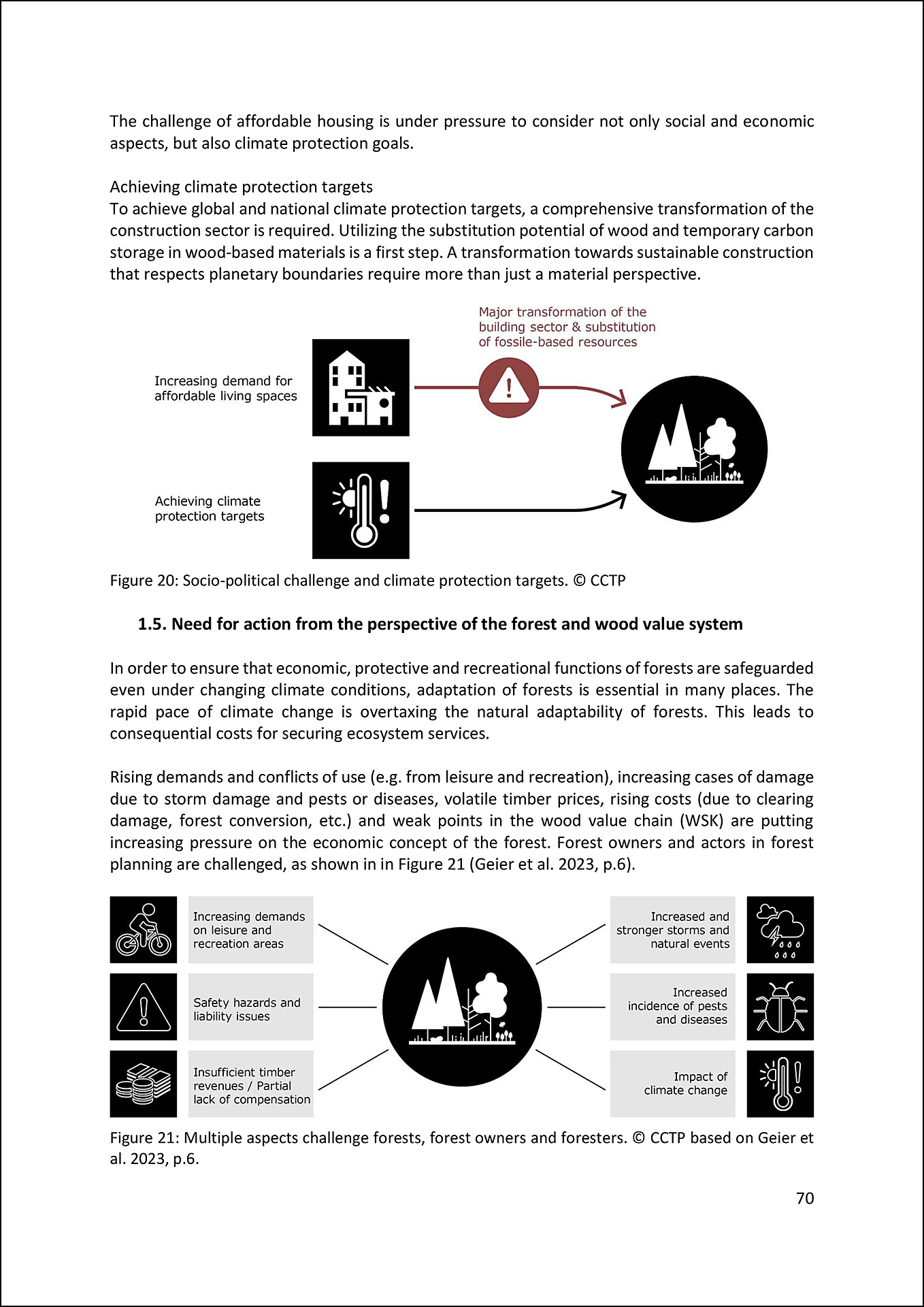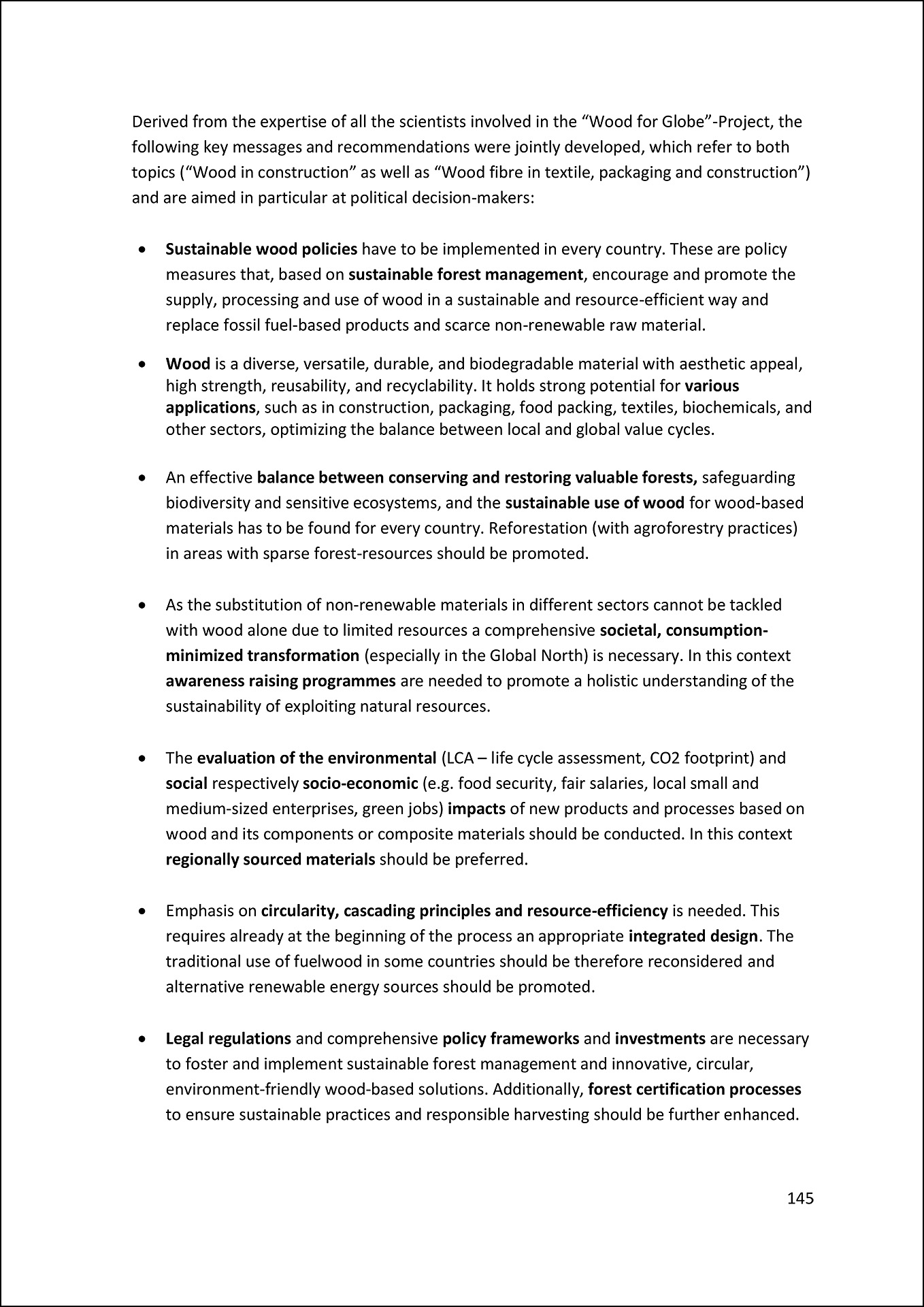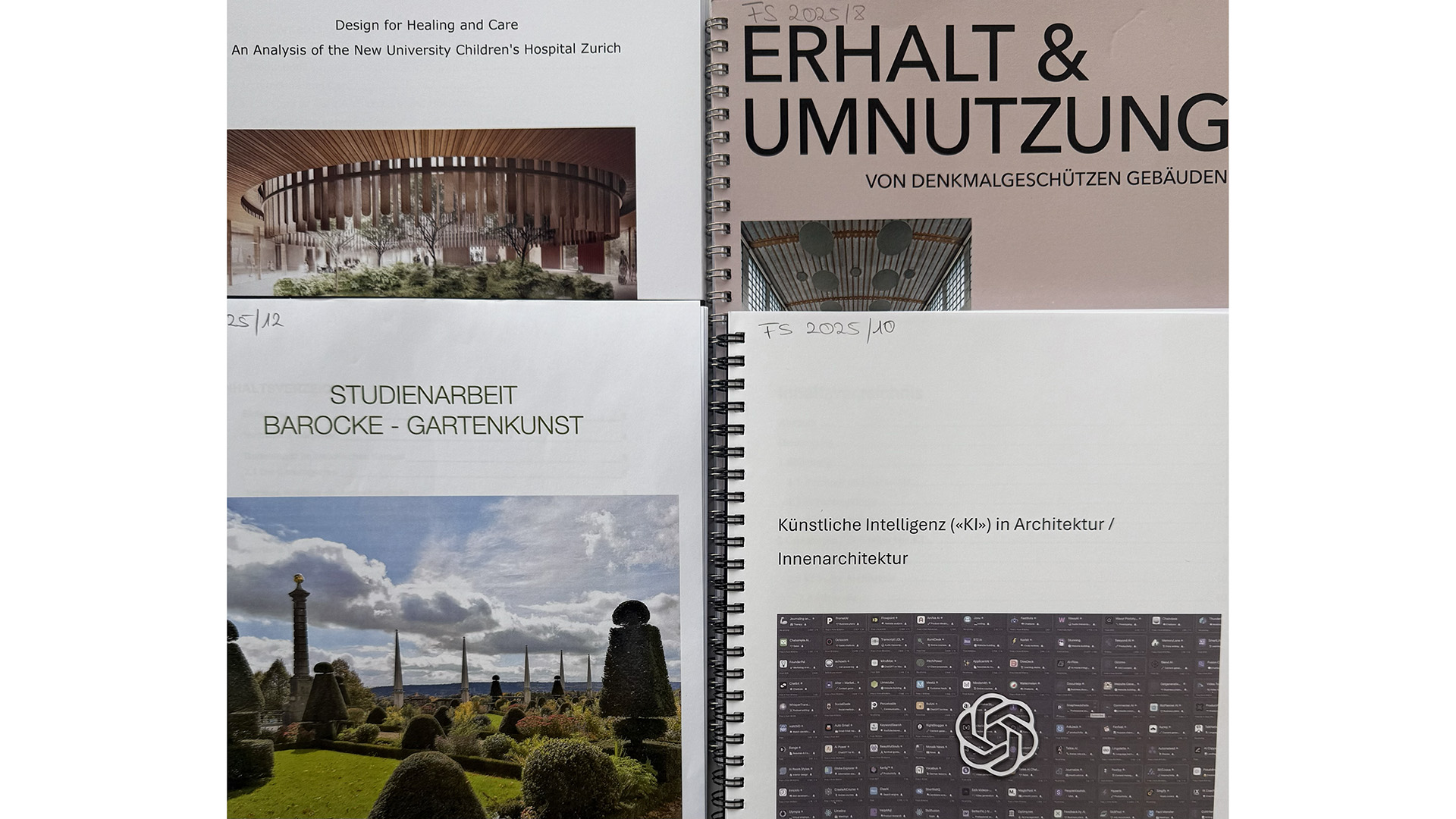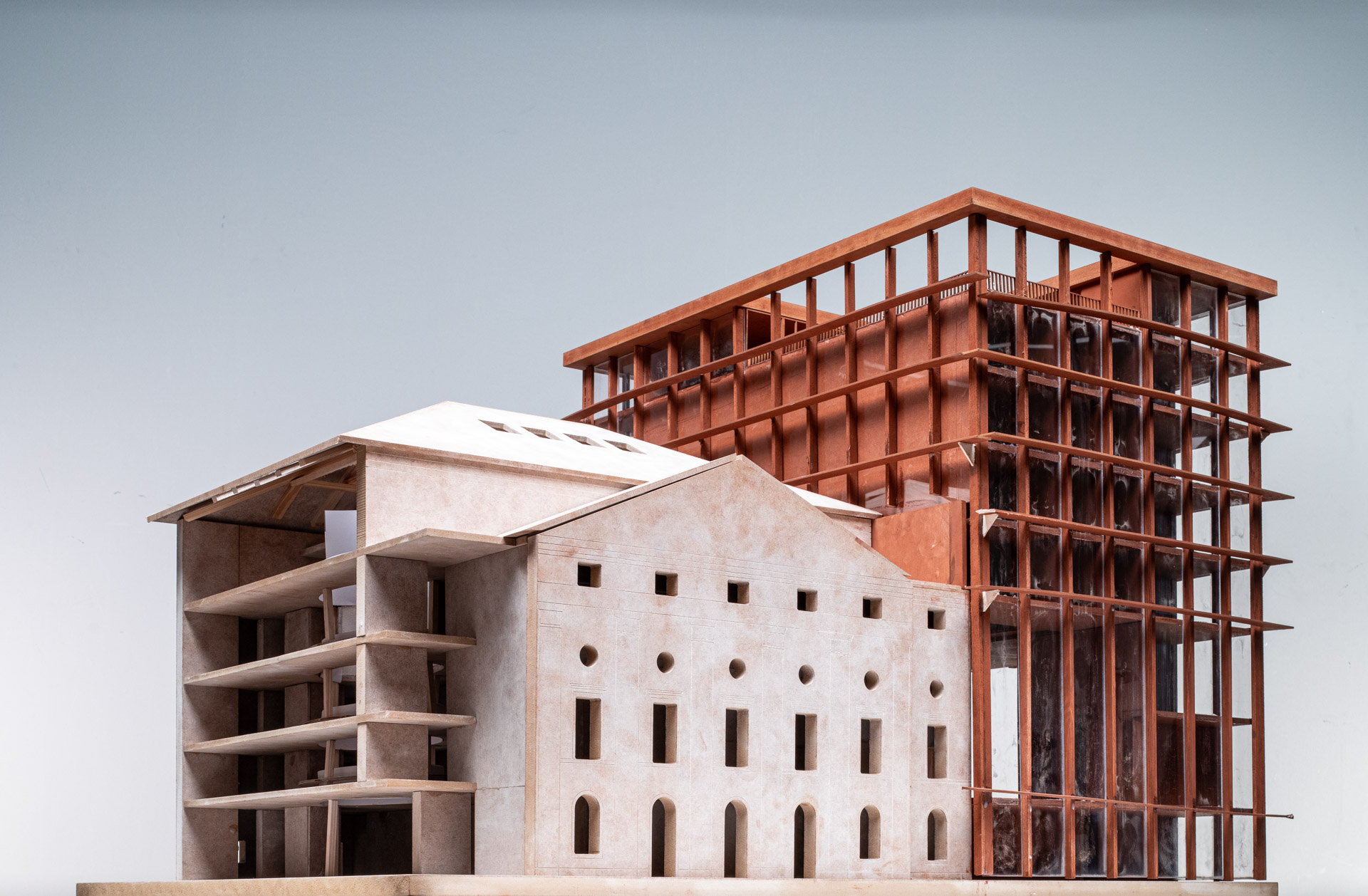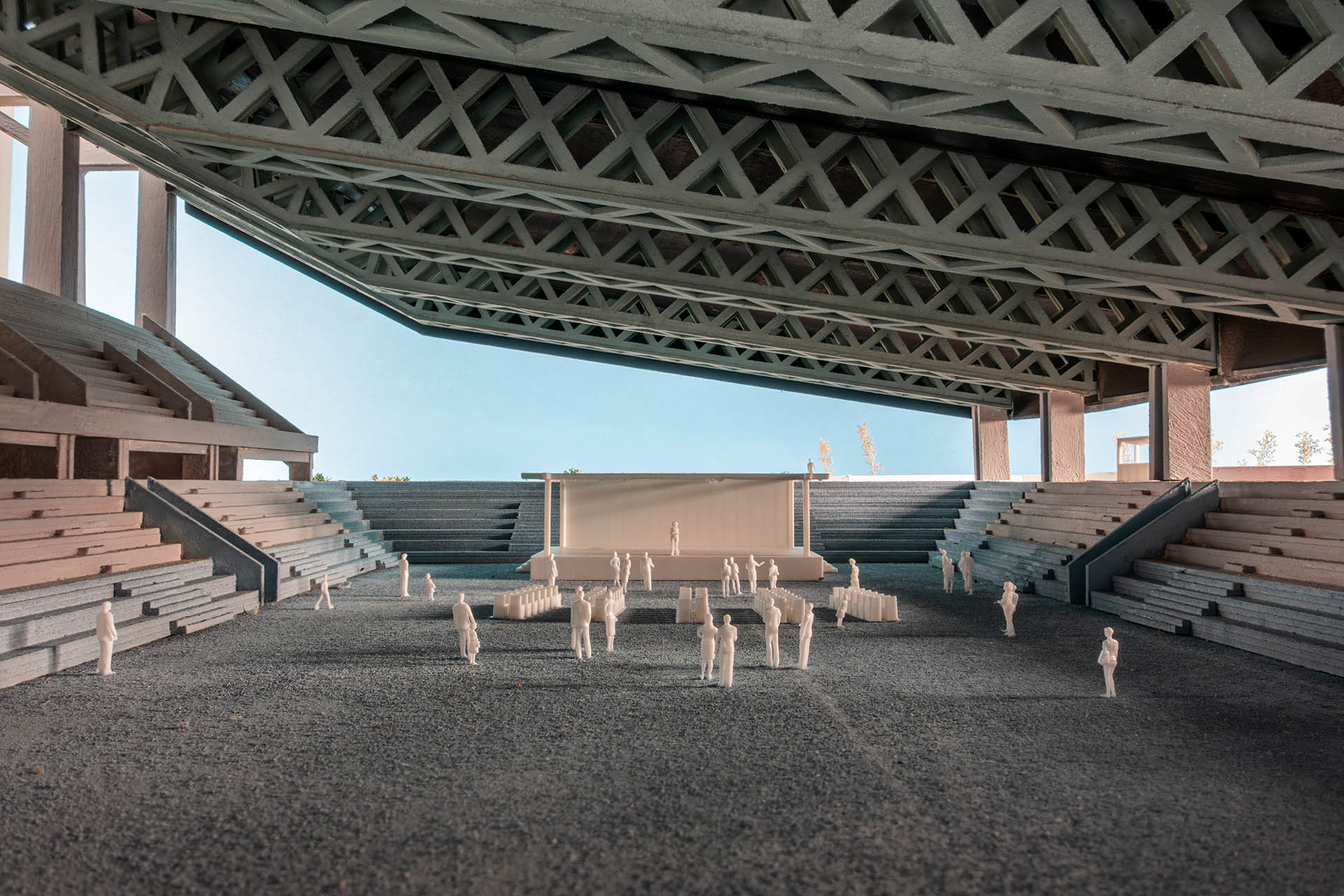Global Wood Policy Platform
The initiative “Wood for Globe – Towards a Global Wood Policy Platform” sees the sustainable use of wood as the key to a climate-neutral future. CCTP is contributing to this international platform’s scientific background report with the results of some its resent research projects.
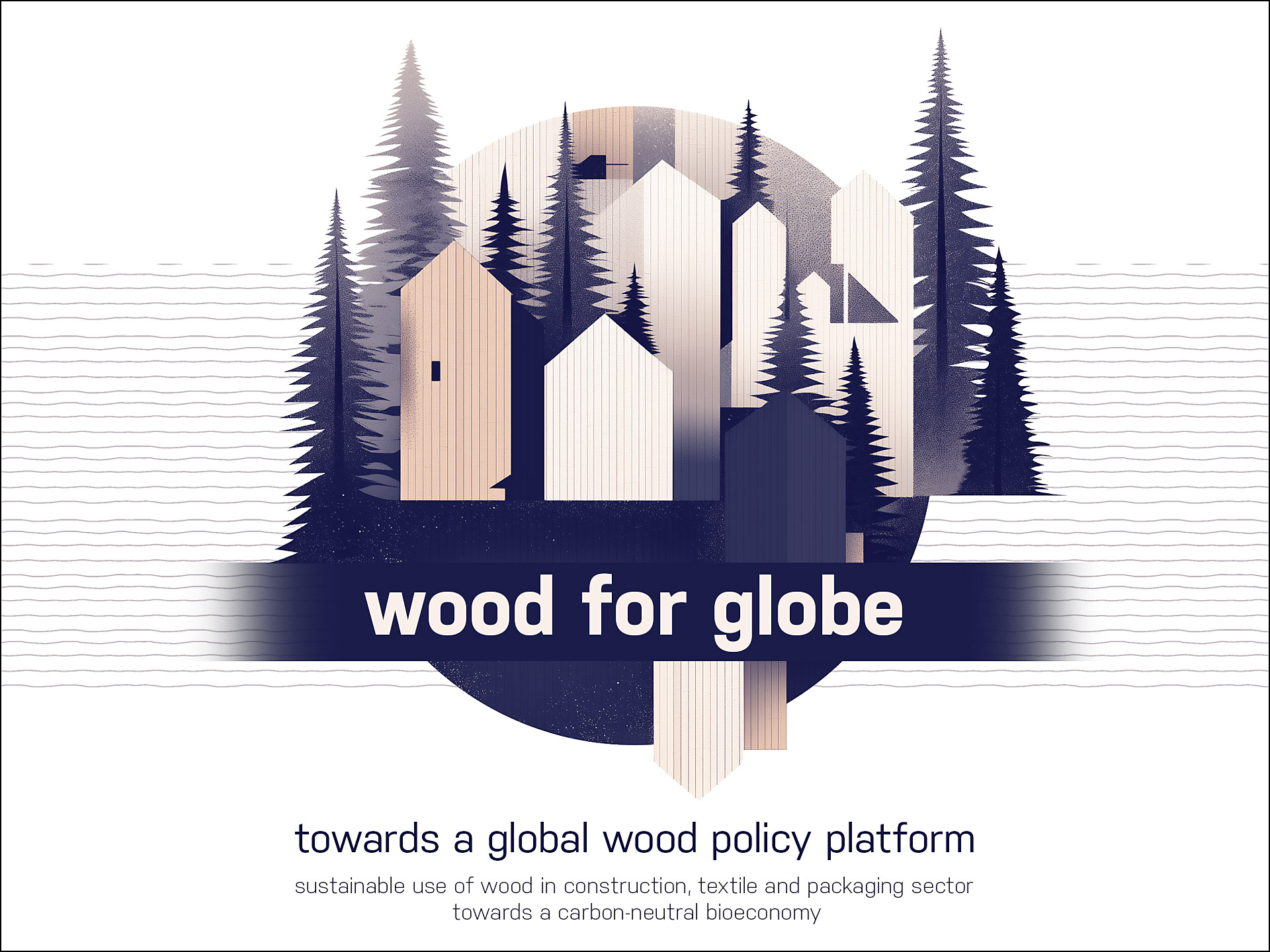
The initiative’s goals
Wood for Globe is an initiative carried out by the United Nations Association of Forestry and Agriculture and non-governmental organisations in the forestry sector. It aims to promote the sustainable use of wood as a key renewable resource. By promoting the management of sustainably harvested forests and wood processing supply chains, it aims to make a significant contribution to achieving global climate goals.
Wood for Globe creates a platform to unite research needs in the forestry and wood sector and to promote a stronger policy dialogue. Globally interconnected supply chains shape the journey of wood from forest to end users, despite the vast differences in forests, forest management and wood use around the world. A common understanding of sustainable wood use is essential to ensure the careful management of this resource. The full potential of wood in a sustainable economy can only be realized through collective efforts.
The Wood for Globe initiative therefore calls for increased cooperation between producer and consumer countries to place sustainable forest management on the global political agenda. This is essential to address gaps in frameworks for sustainable management, to combat global deforestation and to make the necessary investments in reforestation. In the long term, these efforts aim to build a sustainable bioeconomy.
The driving and supporting forces
The driving force behind the initiative was the call by ministers attending the World Forestry Congress in May 2023 to harness the potential of wood in a sustainable bioeconomy as a contribution to climate change mitigation goals.
The initiative was subsequently launched by the Austrian Ministry of Agriculture and funded by the Austrian Forest Fund. In cooperation with the International Union of Forest Research Organisations (IUFRO), the Food and Agriculture Organisation of the United Nations (FAO) and the Centre for Bioeconomy at the University of Natural Resources and Applied Life Sciences, Vienna (BOKU), the initiative is now working to strengthen international partnerships and prepare the political ground for the sustainable use of wood.
Call to Action
An important step was the establishment of a global expert group to develop a scientific basis for the sustainable use of wood. Dr Sonja Geier and Pascal Wacker from the CCTP were invited to join this group to contribute to the development of a scientific background paper. The paper ‘Sustainable use of wood in construction, textile and packaging sector towards a carbon-neutral bioeconomy’ was completed in July 2024. The paper covers various aspects of the use of wood in construction and the use of wood fibres in the construction, textile and packaging industries. Supply and value chains as well as circular economy and reuse concepts, hybrid construction methods were discussed on the sustainable use of wood and wood fibres in the construction industry. At the end of each paper, the authors drew up recommendations and key messages that have the potential to be transferred to other countries.
The findings and recommendations of the expert group in this policy paper were presented to international policy makers at the High-Level Dialogue ‘Wood for Globe: Leading Pathways to Carbon Neutrality and Resilience’ on 19 July 2024, along with other findings from other working groups of the initiative.
At the end of this meeting, the ministers and high-level country representatives present renewed their call for the expansion of sustainable wood-based pathways and the promotion of enhanced policy and technical dialogue.

waldnutzen.ch: Relationships between regional wood use and scope for action in forest management. Image: CCTP

Holzkreislauf Uri: Activating the innovation potential of the forest and wood chain. Image: Adobe Stock 343484618 ⅼ AventuraSur

Modul 17: Resource-orientated use of wood in urban areas via adaptable building typologies. Image: CCTP, Atelier Brunecky
The contribution of CCTP
The CCTP’s contribution to the scientific paper entitled ‘Paving the way towards sustainable use of wood in construction – a governance-oriented and socio-economic approach in Switzerland’ addressed the topic of wood in construction. Three current projects were selected from the wide range of CCTP projects that have produced results that can be transferred to other countries. These were the INNOwood project with the waldnutzen.ch website as a result, the ongoing monitoring of the implementation of the government programme 2020-2024+ in the canton of Uri with the Holzkreislauf Uri, and the research and development project of the timber hybrid high-rise building with the results of Module 17. The triangulation of these three CCTP projects identified relevant aspects for the sustainable use of wood in the construction sector.
Sustainable construction with wood means taking into account local value chains and, implicitly, the use of wood from regional forests. To this end, actors in forestry and the subsequent wood processing chain need to develop cross-sectoral strategies. Awareness must also be raised at the end of the value chain. The ecosystem services provided by forests require the capacity to act on the part of those involved in forest conservation. Ensuring sustainable forest management is therefore a prerequisite for sustainable use in the construction industry.
Another aspect is the use of wood as a renewable resource in the construction industry. Renewable does not mean unlimited availability. Circular economy concepts are diverse and require planners in the implementation phase and the value chain to consider how to move from material flows to material cycles in the future. However, it would be even better if the first step was not to separate or remove a material or component from use in the first place. One of the many approaches to circularity is to extend the life of products and, in this case, buildings. To achieve this, buildings need to be able to adapt to changes over the long term with minimal use of resources. The CCTP demonstrated how this could work early on with the ‘Module 17’ project, using the difficult building typology of high-rise buildings. In this project, an interdisciplinary and transdisciplinary team coordinated by the CCTP worked on adaptable building typologies in timber and timber-hybrid construction. The project not only developed design principles, but also explored the feasibility of adaptable building typologies and gained insights that can be applied beyond the difficult and controversial high-rise typology to promote sustainable urban development in general.
By integrating novel, adaptable building typologies into urban governance frameworks, cities can shape their sustainability and development in a resilient way. These typologies not only address challenges such as high-rise construction but are also in line with broader goals related to climate change mitigation, liveability and improved quality of life for residents.
Whether it is a question of value chains, activating innovation potential or adaptable building typologies, users and stakeholders always play a key role. It is important to involve them at an early stage in the implementation of sustainability goals in the forest-wood chain through to building use, using appropriate methods. At the same time, projects such as INNOwood and the Holzkreislauf Uri show that it is necessary to break new ground in communication. Blind spots in the perception and awareness of the civil society have to be identified and appropriate communication strategies have to be developed that also convey contents that can be understood by lay people.

The results of the three research projects also underline the importance of political responsibility and the necessary commitment to actively address the sustainable use of wood together with civil society. An integrated approach, involving both decision-makers at the end of the value chain and stakeholders in the forest sector and the wood value chain, supports the transition to a carbon-neutral wood-based bioeconomy. This will benefit society and climate protection in the long term.
Links
Background Paper «Sustainable use of wood in construction, textile and packaging sector towards a carbon-neutral bioeconomy»
Contact
Dr. Sonja Geier
Kompetenzzentrum Typologie & Planung in Architektur (CCTP)
sonja.geier@hslu.ch
